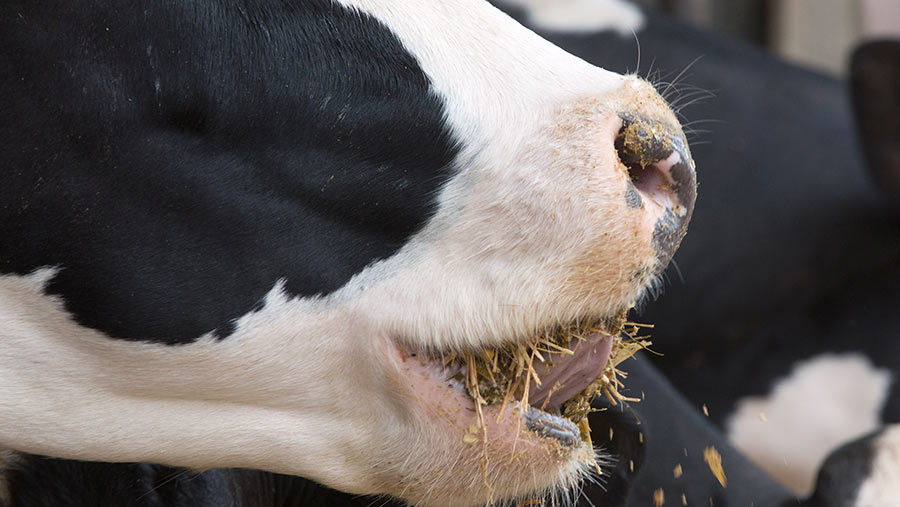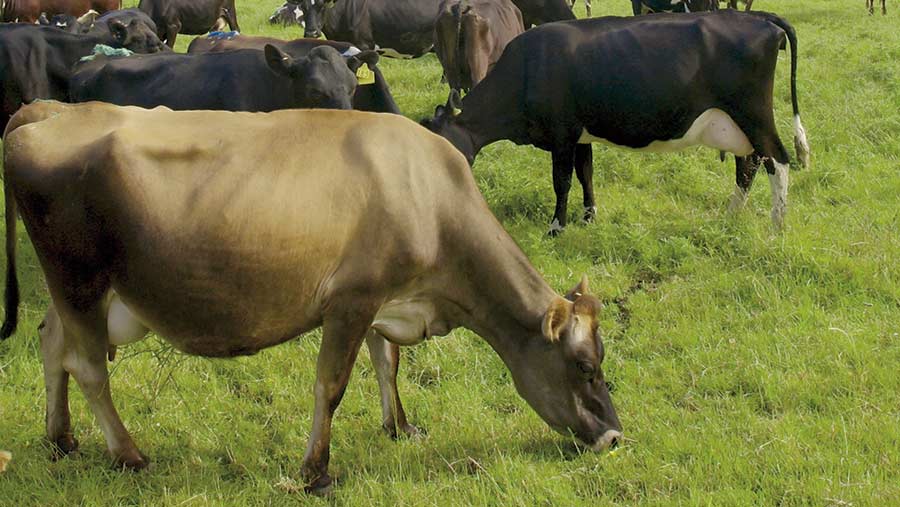Is it worthwhile feeding supplements to produce more milk?
 © Tim Scrivener
© Tim Scrivener Feeding supplement to grass-based dairy cows can be profitable but only in a year with high milk prices, a trial in New Zealand has shown.
However, feed prices must be adequately costed at a minimum value of 2ppl to take into consideration not only the cost of feed, but associated costs such as additional labour and machinery.
Researchers at the Northland Agricultural Research Farm (NARF) carried out a three-year study to assess the profitability of feeding supplements to increase stocking rate and milk production.
They established three groups of 80 cows:
- A pasture-only farmlet stocked at 2.6 cows/ha
- A cropping farmlet stocked at 2.9 cows/ha and fed turnips, fodder beet and maize silage grown on the grass platform
- A PKE (palm kernel) farmlet stocked at 2.9cows/ha and supplemented with palm kernel.
The results showed:
- The grass only farmlet was more profitable in the first year when the milk price was low but the PKE farm was the most profitable of the three when the milk price was higher in seasons two and three.
- On average over three years the pasture-only farmlet produced 900kg milk solids/ha and 350kg MS/cow.
- In comparison the cropping farmlet produced 1,000kg MS/ha and 345 kg MS/cow.
- The PKE farmlet produced almost 1,100kg MS/ha and more than 375kg MS/cow.
- The average response to feeding palm kernel was 126g MS/kg DM – much higher than expected. The average response to supplements and crops in Dairy Base – which compares performance across NZ dairy herds – is 80g MS/kg DM.
Explaining the results at the LIC conference last week via conference link, John Roche from Down To Earth Advice said the profitability of supplementary feeds depended on the cost of marginal milk – the extra milk produced from feeding crops or supplements.
If the cost of marginal milk was lower than the milk price then it would be profitable, but he added that the study had shown the milk price needed to be above $6/kg (£3/kg) MS for this to happen.

© Tim Graham/robertharding/Rex/Shutterstock
He said the cost of marginal milk depended on many factors including the milk production response, the price of the supplement, and non-feed costs such as labour and fuel, which are not always considered in the budget.
In the trial, researchers calculated that total marginal costs were $1.83/kg (£92p/kg) MS – with 83 cents accounting for non-feed costs.
In UK terms, this means that if feed costs 1ppl, farmers should be budgeting for a minimum of 2ppl (double) to ensure they see a return on investment.
Results of the three-year trial |
|||
|
Year one (2015-16) |
Year two (2016-17) |
Year three (2017-18) |
|
|
Supplement fed on the PKE farm (kg DM/ha) |
469 |
513 |
544 |
|
Milk production Cropping farmlet (kg MS/ha) |
1049 |
1,053
|
887*
|
|
Milk production PKE farmlet (kg MS/ha) |
1,028 |
1,118 |
1,128 |
|
Milk production Grass only farmlet (kg MS/ha) |
870 |
965 |
893* |
|
Operating profit Cropping Farmlet $/ha |
433 |
2,300 |
1,928 |
|
Operating profit PKE farmlet $/ha |
733 |
2,887 |
3,224 |
|
Operating profit Grass Farmlet $/ha |
787 |
2,761 |
2,470 |
|
Milk price ($/kg MS) |
3.90 |
6.12 |
6.55 |
|
* The challenging spring of 2017-18 meant cropping and grass-only farmlets moved to OAD milking. |
|||
